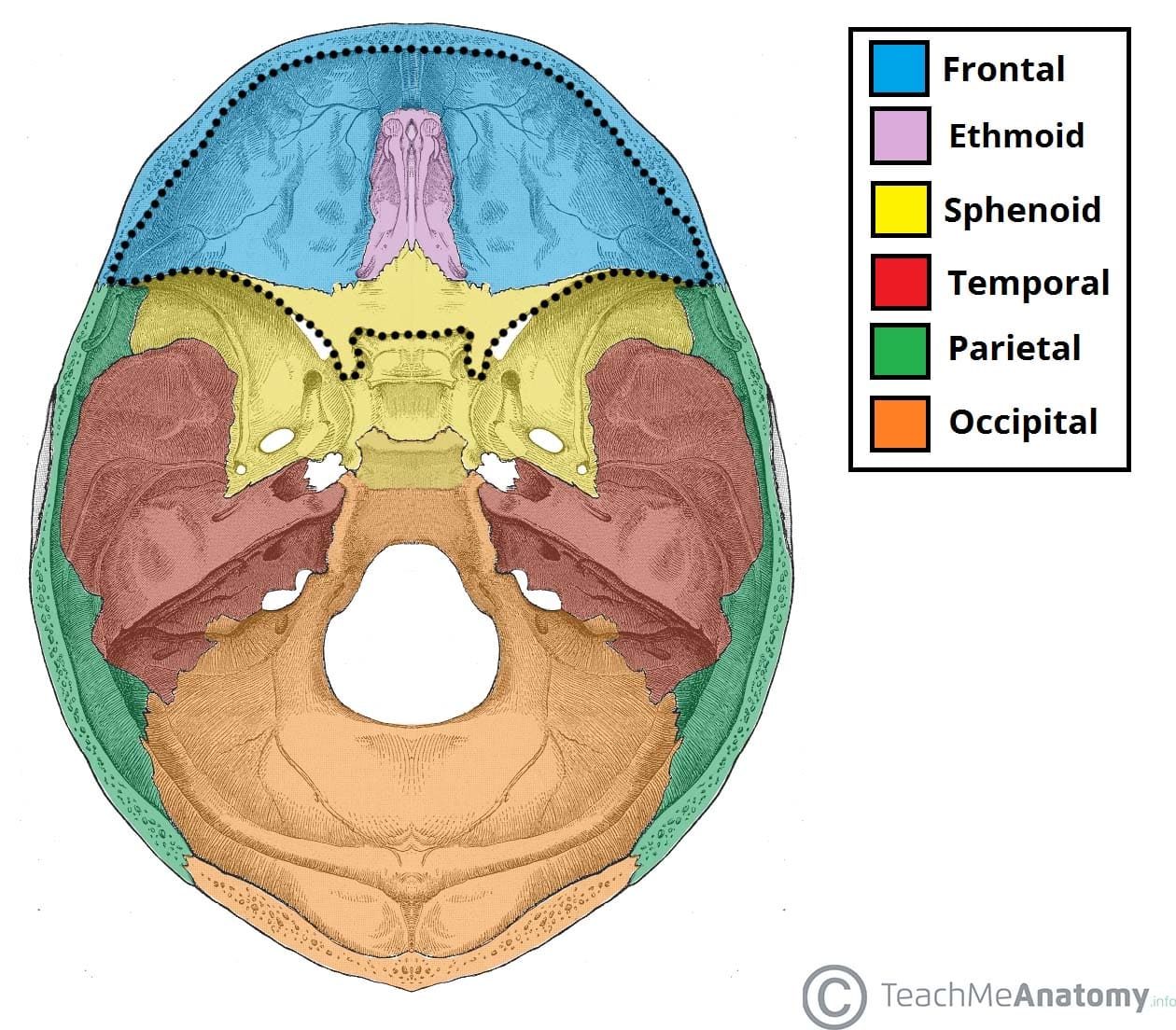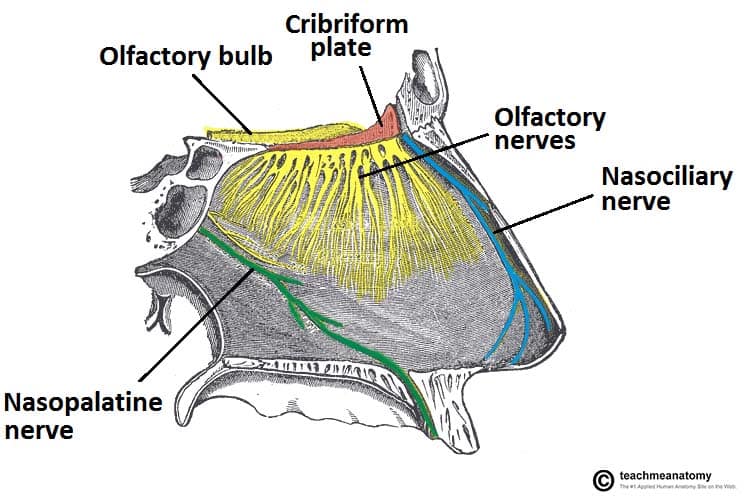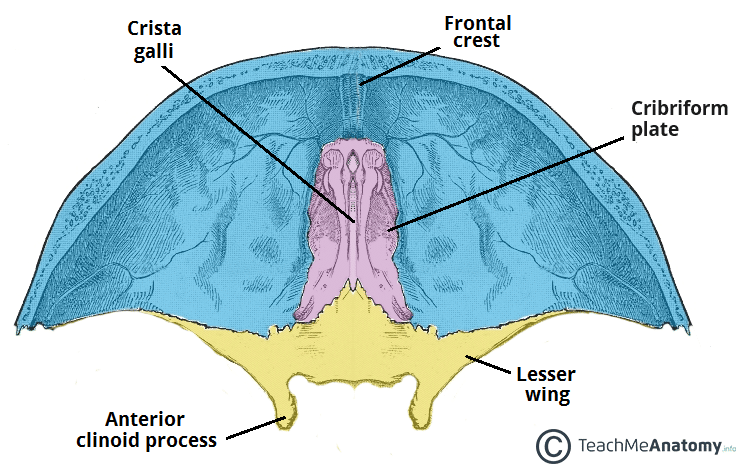The floor of the cranial cavity is divided into three distinct depressions. They are known as the anterior cranial fossa, middle cranial fossa and posterior cranial fossa. Each fossa accommodates a different part of the brain.
The anterior cranial fossa is the most shallow and superior of the three cranial fossae. It lies superiorly over the nasal and orbital cavities. The fossa accommodates the anteroinferior portions of the frontal lobes of the brain.
In this article, we shall look at the borders, contents and clinical correlations of the anterior cranial fossa.
Borders
The anterior cranial fossa consists of three bones: the frontal bone, ethmoid bone and sphenoid bone.
It is bounded as follows:
- Anteriorly and laterally it is bounded by the inner surface of the frontal bone.
- Posteriorly and medially it is bounded by the limbus of the sphenoid bone. The limbus is a bony ridge that forms the anterior border of the prechiasmatic sulcus (a groove running between the right and left optic canals).
- Posteriorly and laterally it is bounded by the lesser wings of the sphenoid bone (these are two triangular projections of bone that arise from the central sphenoid body).
- The floor consists of the frontal bone, ethmoid bone and the anterior aspects of the body and lesser wings of the sphenoid bone

Fig 1 – The bones of the base of the skull. The anterior cranial fossa has been outlined.
Contents
There are several bony landmarks present in the anterior cranial fossa.
The frontal bone is marked in the midline by a body ridge, known as the frontal crest. It projects upwards, and acts as a site of attachment for the falx cerebri (a sheet of dura mater that divides the two cerebral hemispheres).
In the midline of the ethmoid bone, the crista galli (latin for cock’s comb) is situated. This is an upwards projection of bone, which acts as another point of attachment for the falx cerebri.
On either side of the crista galli is the cribriform plate which supports the olfactory bulb and has numerous foramina that transmit vessels and nerves.
The anterior aspect of the sphenoid bone lies within the anterior cranial fossa. From the central body, the lesser wings arise. The rounded ends of the lesser wings are known as the anterior clinoid processes. They serve as a place of attachment for the tentorium cerebelli (a sheet of dura mater that divides the cerebrum from the cerebellum).
The lesser wings of the sphenoid bone also separate the anterior and middle cranial fossae.
Foramina
The ethmoid bone in particular contains the main foramina (openings that transmit vessels and nerves) of the anterior cranial fossa. The cribriform plate is a sheet of bone seen either side of the crista galli which contains numerous small foramina – these transmit olfactory nerve fibres (CN I) into the nasal cavity. It also contains two larger foramen:
- Anterior ethmoidal foramen – transmits the anterior ethmoidal artery, nerve and vein.
- Posterior ethmoidal foramen – transmits the posterior ethmoidal artery, nerve and vein.

Fig 3 – Lateral view of the nasal septum. Note the close relationship of the olfactory bulb and cribriform plate
Clinical Relevance: Fracture of the Cribriform Plate
The cribriform plate of the ethmoid is the thinnest part of the anterior cranial fossa, and therefore most likely to fracture. There are two major consequences of cribriform plate fracture:
- Anosmia – the olfactory nerve fibres run through the cribriform plate, and can be ‘sheared’, resulting in loss of sense of smell.
- CSF rhinorrhoea – the fragments of bone can tear the meningeal coverings of the brain, causing the leakage of cerebrospinal fluid into the nasal cavity. This is visible as a clear fluid.
